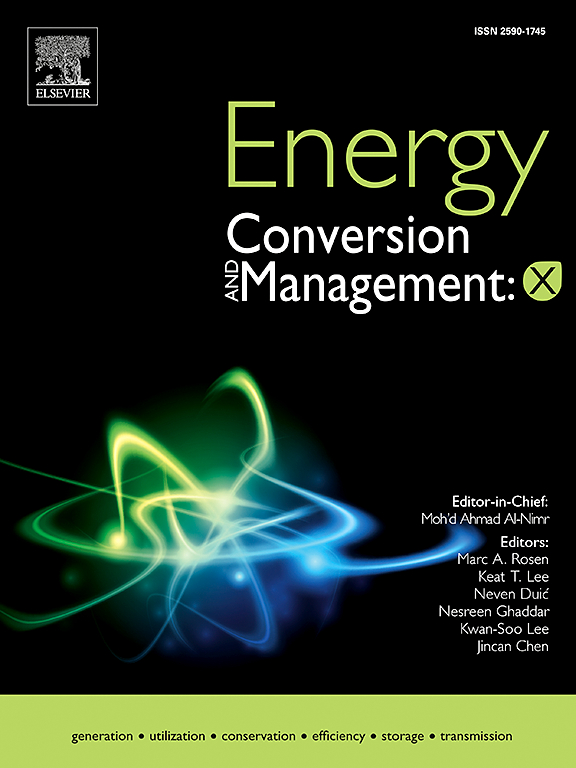A novel AI-based CNN model to predict the structural performance of monopile used for offshore wind energy systems
IF 7.1
Q1 ENERGY & FUELS
引用次数: 0
Abstract
This study builds an AI-based Convolutional Neural Network (CNN) model to guess 50-year extreme wind and wave conditions and assess structural loads on the monopile foundation of the NREL 15 MW offshore wind turbine. The model was trained and validated by means of 7 years of measured wind and wave data, applying an organized filtering process to check data quality. The CNN projections were evaluated via a multi-step validation approach, integrating extreme value investigation and structural load approximation. The AI-CNN model forecasted a 50-year extreme wind speed (EWS) of 21.61 m/s, 5.3 % higher than the Gumbel algorithm, guaranteeing conventional load calculations. Structural analysis by means of BLADED software demonstrated that critical load sub-components, such as the y-force and x-moment, amplified by up to 10 %, strengthening safety limits under extreme circumstances. Additionally, the AI-CNN model was well validated alongside psychrometric data to expand prediction stoutness further than established extreme value modeling. Additionally, comparative assessment of training dataset sizes (100–800) validated increasing model accuracy and reliability with bigger datasets, highlighting the effectiveness of long-term measured data for CNN training. These conclusions validate the AI-CNN model as a dependable tool for extreme environmental load calculations, advancing enhanced optimization and structural safety for OWT monopile foundations.
基于人工智能的海上风电单桩结构性能预测CNN模型
本研究建立了基于人工智能的卷积神经网络(CNN)模型,对NREL 15 MW海上风电机组的50年极端风浪条件进行了预测,并对单桩基础结构荷载进行了评估。该模型通过7年的风浪观测数据进行训练和验证,并采用有组织的过滤过程来检查数据质量。CNN预测通过多步骤验证方法进行评估,整合极值调查和结构荷载近似。AI-CNN模型预测的50年极端风速(EWS)为21.61米/秒,比Gumbel算法高5.3%,保证了传统的负荷计算。通过BLADED软件进行的结构分析表明,临界载荷子分量,如y-力和x-力矩,放大了10%,加强了极端情况下的安全限制。此外,AI-CNN模型与干湿数据一起得到了很好的验证,比已建立的极值模型进一步扩大了预测的可靠性。此外,训练数据集规模(100-800)的比较评估验证了更大数据集提高模型的准确性和可靠性,突出了长期测量数据对CNN训练的有效性。这些结论验证了AI-CNN模型是一种可靠的极端环境荷载计算工具,促进了OWT单桩基础的优化和结构安全性。
本文章由计算机程序翻译,如有差异,请以英文原文为准。
求助全文
约1分钟内获得全文
求助全文
来源期刊

Energy Conversion and Management-X
Multiple-
CiteScore
8.80
自引率
3.20%
发文量
180
审稿时长
58 days
期刊介绍:
Energy Conversion and Management: X is the open access extension of the reputable journal Energy Conversion and Management, serving as a platform for interdisciplinary research on a wide array of critical energy subjects. The journal is dedicated to publishing original contributions and in-depth technical review articles that present groundbreaking research on topics spanning energy generation, utilization, conversion, storage, transmission, conservation, management, and sustainability.
The scope of Energy Conversion and Management: X encompasses various forms of energy, including mechanical, thermal, nuclear, chemical, electromagnetic, magnetic, and electric energy. It addresses all known energy resources, highlighting both conventional sources like fossil fuels and nuclear power, as well as renewable resources such as solar, biomass, hydro, wind, geothermal, and ocean energy.
 求助内容:
求助内容: 应助结果提醒方式:
应助结果提醒方式:


